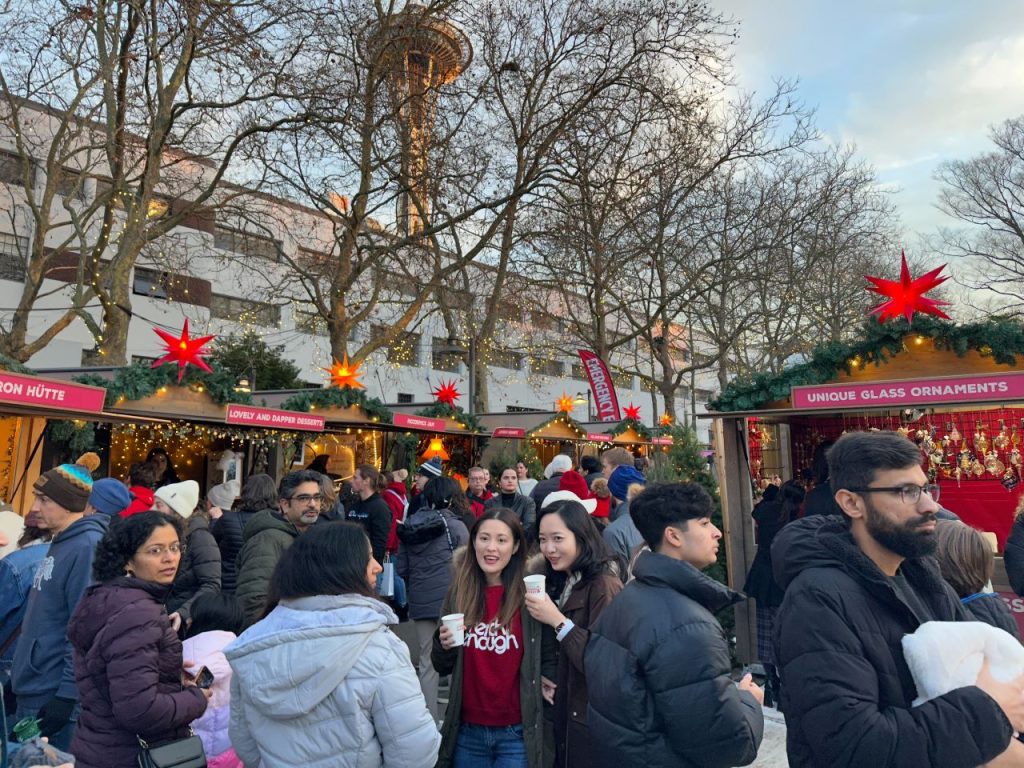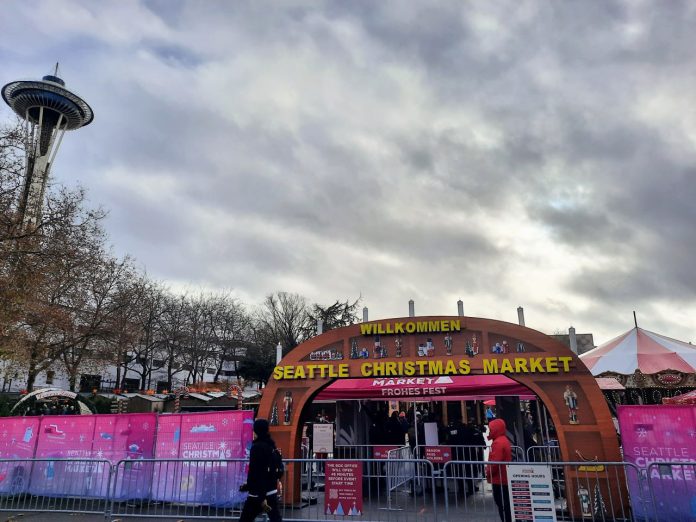
Holiday merrymaking should involve more whimsy, less rigmarole, and less price gouging.
Seattle still hasn’t cracked the code to create a true Christmas market that doesn’t feel as if it was designed by the Grinch: cordoned off from the rest of city, hard to reach, the vibes are off, and the wares are expensive. The idyllic Christmas markets of Europe, meanwhile, are known for the opposite traits: integrated into the city, easy to reach, plenty of ambiance, and free to enter.
Natalie Bicknell Argerious broke down Seattle’s great Christmas market lacking in a 2022 Urbanist article: “Despite being regularly ranked among the most hygge, or coziest, American cities, Seattle lacks what is considered a key ingredient to creating hygge in much of the rest of the world — a truly festive outdoor Christmas market.” From Ballard’s Julefest to Magnuson Park’s Winter Solstice Night Market, the options are lacking, Natalie pointed out.
In 2023, a new enterprise made a foray into Seattle’s Christmas market business. The newcomer seemed promising, but similar problems that have plagued Seattle’s other holiday markets arose. Dubbed “Seattle Christmas Market,” the German-themed holiday event took over Seattle Center’s south fountain lawn and Fisher Pavilion for the month leading up to Christmas, fencing off the area. The sign at the gate beckoned “Willkommen” but the lines and staff checking for tickets ($20 a pop at the gate, or $36 for a full season pass) sent a different message.
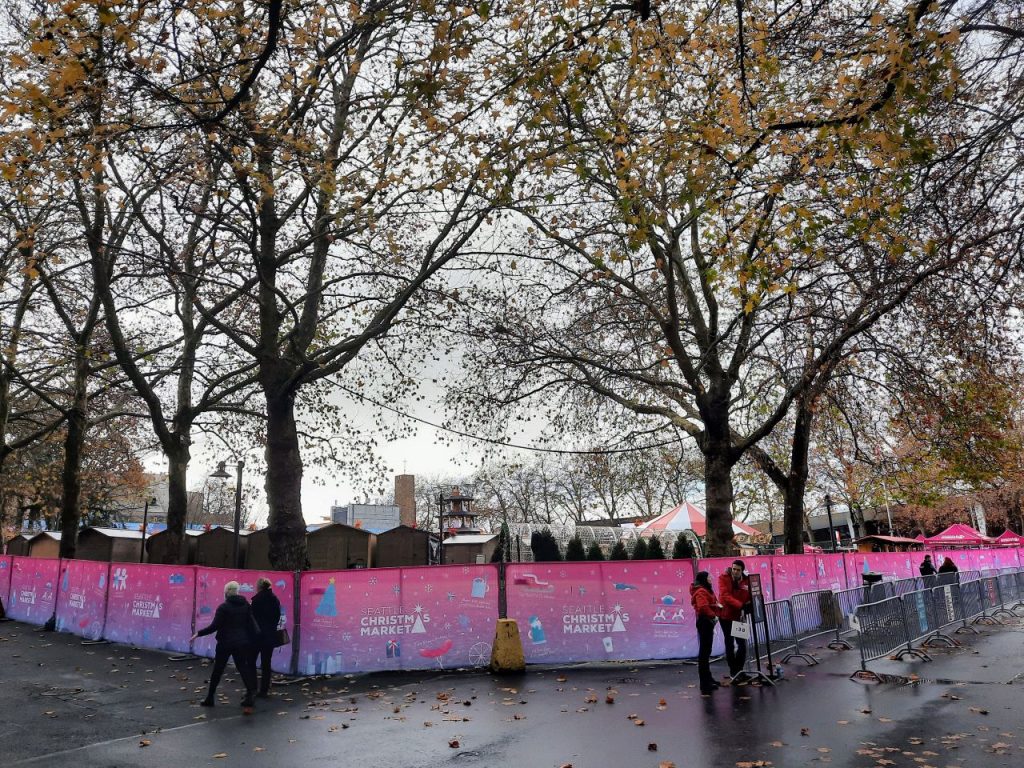
Patrons found that the price gouging did not stop at the gate. Instead, ticketholders were greeted with yet more lines to purchase overpriced food and drinks, running the gambit from $12 beers to $25 schnitzel. Ebenezer Scrooge would approve of the business model, but many marketgoers were left exclaiming bah humbug, not exactly feeling the Christmas spirit.
Seattle’s shortcoming is a real shame since a well-executed Christmas market can be a seasonal pick-me-up and a real cultural and economic boon: “Meanwhile in the world’s great Christmas markets, people can enjoy simply being there without spending a cent,” Natalie wrote. “Yet many often do end up shopping for gifts or buying foods and beverages, and the economic impact of these markets is considerable. In Germany, Christmas market closures resulting from the pandemic in 2020 were estimated to result in about €3 billion euros in lost revenue for the country.”
Seattle Christmas markets are too fledgling and half-hearted to have that kind of impact, but they could get there with proper nurturing.
The City of Seattle distanced itself from the pricing model for the new Christmas market, while at the same time defending it. “This market is not run by Seattle Center nor the City as it is a commercial client,” Seattle Center spokesperson Jayme Stocker told The Urbanist. “While I cannot speak on behalf of the market, what I do know is the producer was offering many discounts from 20-30% off the season pass to discounted tickets off individual tickets, which were a great value for patrons to enjoy the market as often as they would like or during one specified time.”
On the plus side, Seattle Christmas Market organizers sprung for a festive “Christmas Pyramid” — a centerpiece piece of decor that doubled as a stage for carolers and a glühwein (mulled wine) hut. At least some of that ticket revenue was put to good use. However, the overcrowded and fenced-in nature of the market stepped on the ambience and instead contributed to feelings of claustrophobia. This should feel more like a festival than a cattle corral.
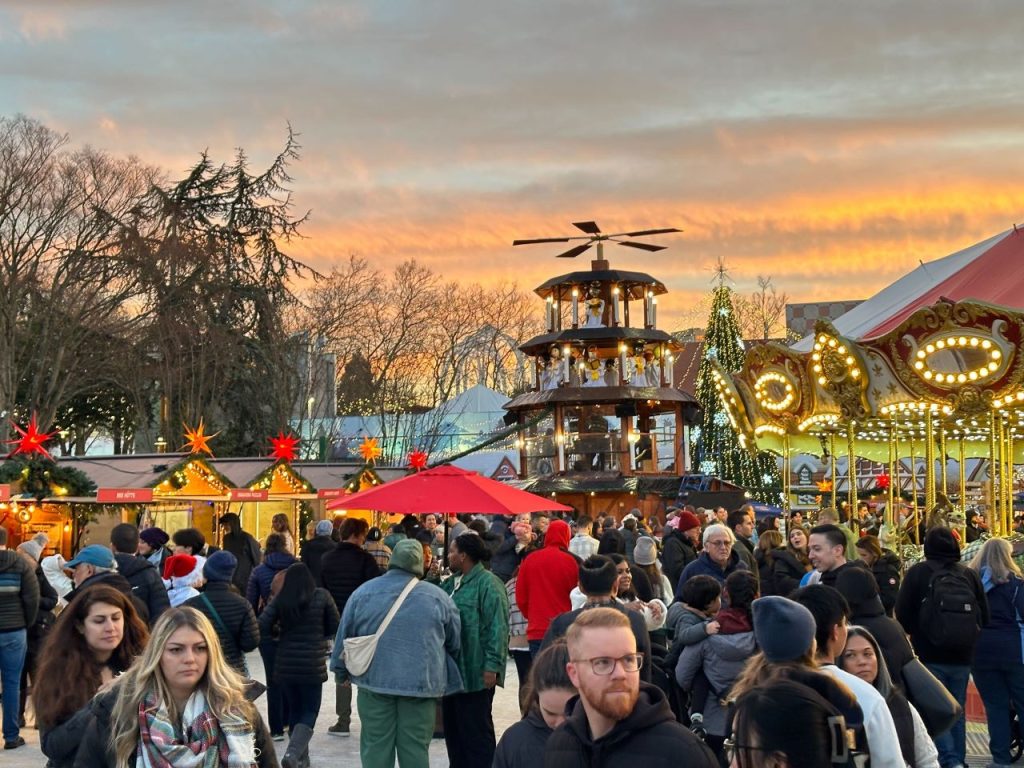
Market organizers boasted of 60 different vendors at Seattle’s market, but it’s not clear all 60 were operating at all times, contributing to some complaints of low variety when it came to offerings.
Seattle Christmas Market is an offshoot of a longer-running neighbor to the north: Vancouver Christmas Market, which takes over Jack Poole Plaza next to Canada Place Convention Center every holiday season. After more than a decade of operation and seeing no successful Christmas market in Seattle, the organizers decided to port their concept across the border, using a carbon copy website to promote the venture, with a Christmas Pyramid of the same design as the centerpiece of the venue. If it ain’t broke, don’t fix it, I suppose.
Uptown traffic jams and lack of transit
One thing that didn’t port over from British Columbia, however is transit. While Vancouver Christmas Market is within a 10 minute walk from two different rail hubs serving multiple TransLink lines, Seattle Center is not within an easy walk of light rail, with Westlake Station one mile away. The Seattle Monorail can complete the connection, but it adds a transfer that slows the trip. While several bus routes serve the area, they quickly get stuck in traffic generated by the Christmas market and other Seattle Center events. Bus lanes are supposed to help insulate transit from Seattle Center traffic jams, but they are not enforced well enough to do the trick.
The lack of reliable transit pushes more people to drive or ridehail to the venue, leading to even worse traffic jams in a negative feedback loop. Patrons could be looking at $30 parking to sit in 30 minutes of traffic trying to get out of Uptown. Overall, the lack of reliable options to get to and from the Seattle Center sours the experience.
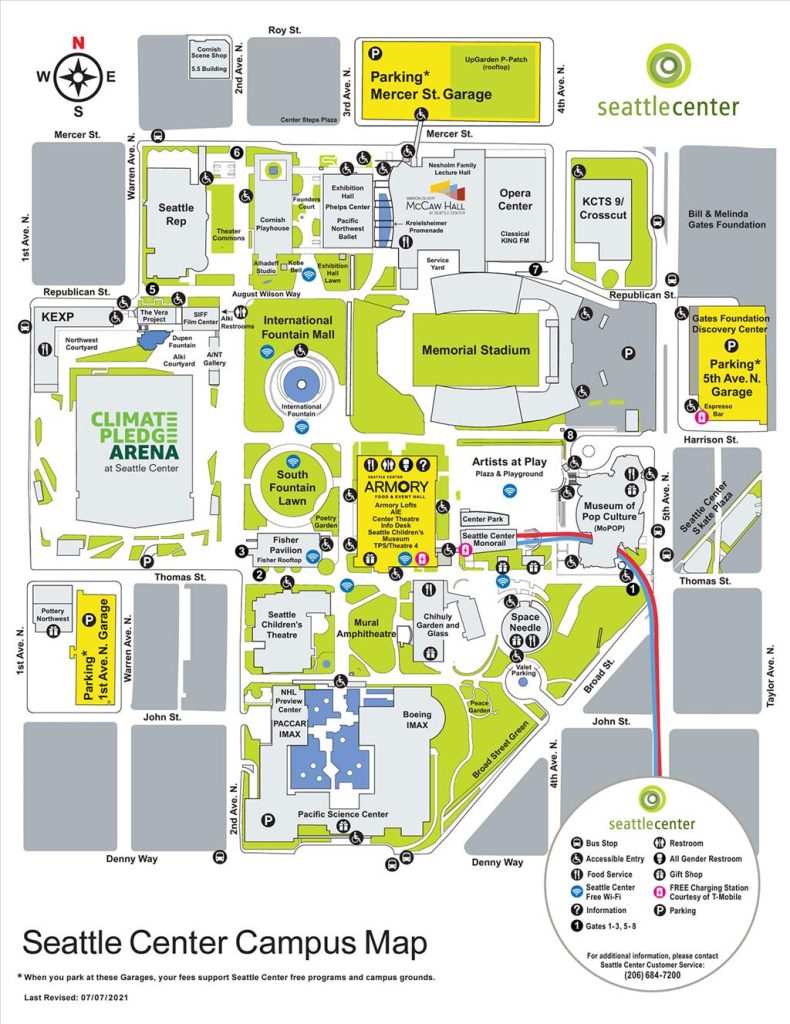
Light rail expansion to Uptown is planned in the form of two Ballard Link station on either side of Seattle Center. However, Sound Transit’s failure so far to settle on station locations, stop adding new alternatives to the study, and wrap up environmental study has pushed back the timeline to 2039 at the earliest to inaugurate service. For the next 15 years or more, better bus service will be essential to ensuring Seattle Center mobility and access. Unfortunately, King County Metro has cut bus frequencies due to its staffing shortage and the Seattle Department of Transportation has not stepped forward with bus lane expansions and improvements to smooth service.
Weighing Christmas market alternatives
The mobility woes could lead to doubts as to whether Seattle Center is the right place to host Seattle’s main Christmas market. Downtown would have more transit options and more potential for spillover benefits to neighboring businesses. Pike Place Market is already iconic and loaded up with vendors and ambience.
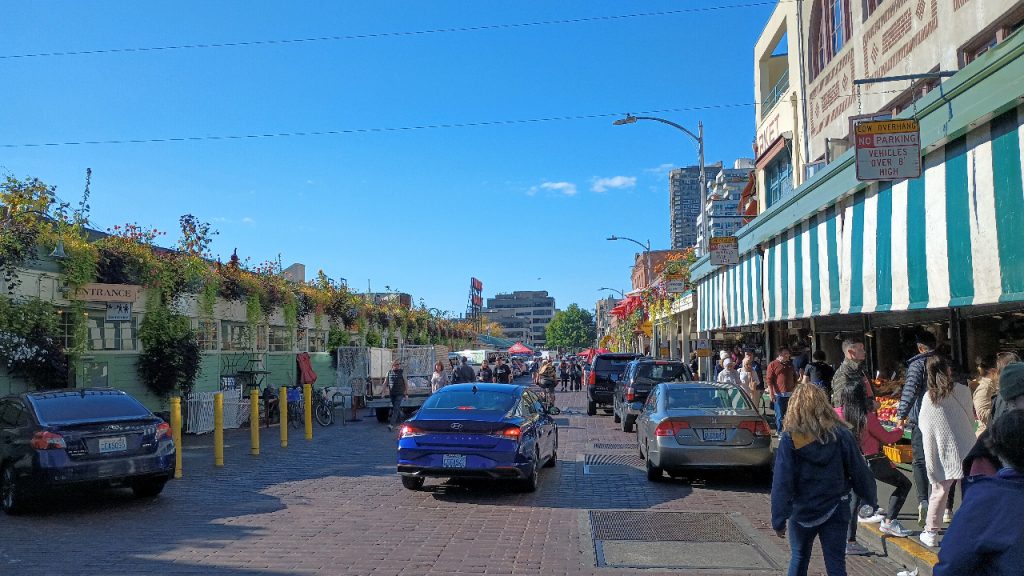
On the other hand, Downtown lacks a large pedestrianized space or park to host the market. Pike Place is famously dedicated to traffic jams and parking rather pedestrians. The City’s Pike Pine Renaissance project punted on the issue of pedestrianization despite years of process and hype about remaking Pike and Pine Streets to create a continuous, high-quality pedestrian experience between Pike Place Market to Capitol Hill. In his Downtown Activation Plan, Mayor Bruce Harrell expressed interest in hosting more frequent street closures for events and picketball popups, but so far efforts have been sporadic at best.
For all its faults, Seattle Center does offer a large pedestrianized area. However, as a collection of event venues and nonprofit offices, it lacks an on-site or closely adjoining business district — and there isn’t clear intent to change that. A fairly miserable pedestrian environment on car-choked Mercer Street and Denny Way walls off the pedestrian flow from Seattle Center to surrounding blocks.
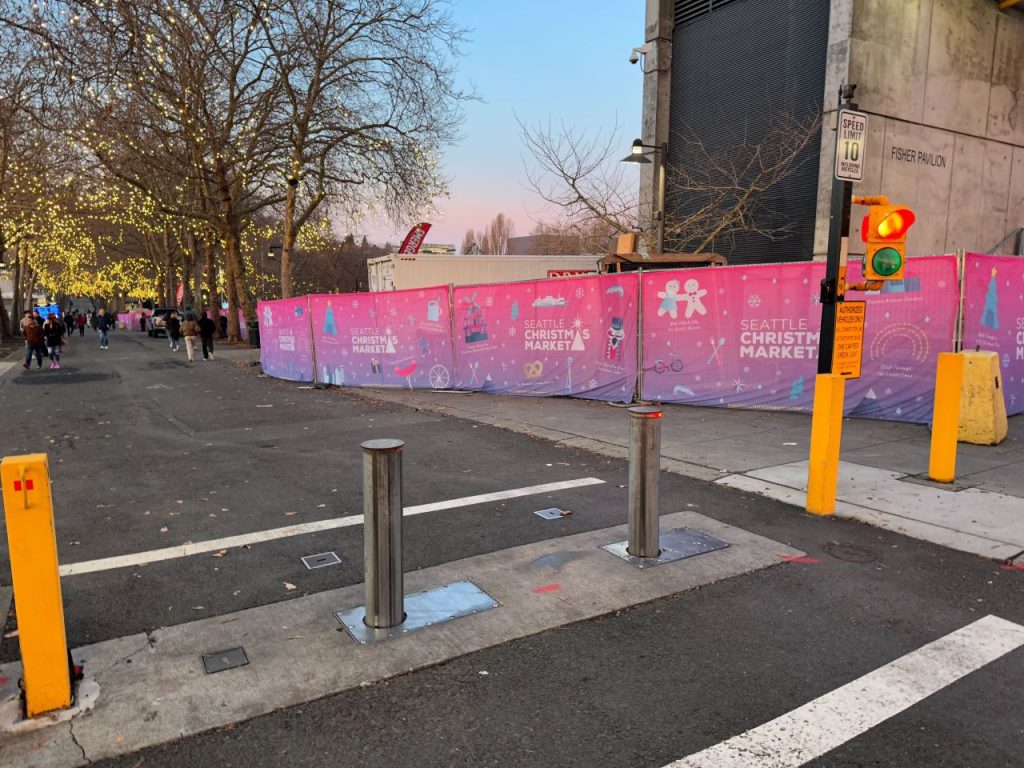
Other locations outside of Downtown could recommend themselves for a Christmas market. For example, Ballard’s Julefest charges admittance and cordons itself from the neighborhood, but expanding a market on Ballard Avenue would have real potential. Given crowding issues, establishing a successful market in every quadrant of the city is another way to improve the state of affairs.
Natalie noted some of the shortcomings of these Christmas markets in her overview: “Julefest, held by the National Nordic Heritage Museum in Ballard, may welcome throngs of visitors each year, but it is held on the museum grounds away from the neighborhood’s busy center for one weekend during November. And with its austere white tarped stalls, the atmosphere is indistinguishable from other outdoor events.”
To follow the European blueprint, Seattle would need to establish a marquee pedestrian street or quarter amidst a bustling business district. With such an asset, setting up a Christmas market would be a cinch. Throw up some string lights, tree decorations, and a stage for musicians for some instant ambience — Christmas pyramids optional. The market could come together fairly organically; storefronts can expand into the street and vendor stalls can fill in the gaps. There doesn’t need to be gates and ticketing booths as the city becomes the winter wonderland rather than a hermitically sealed pay-to-enter space set apart from it.
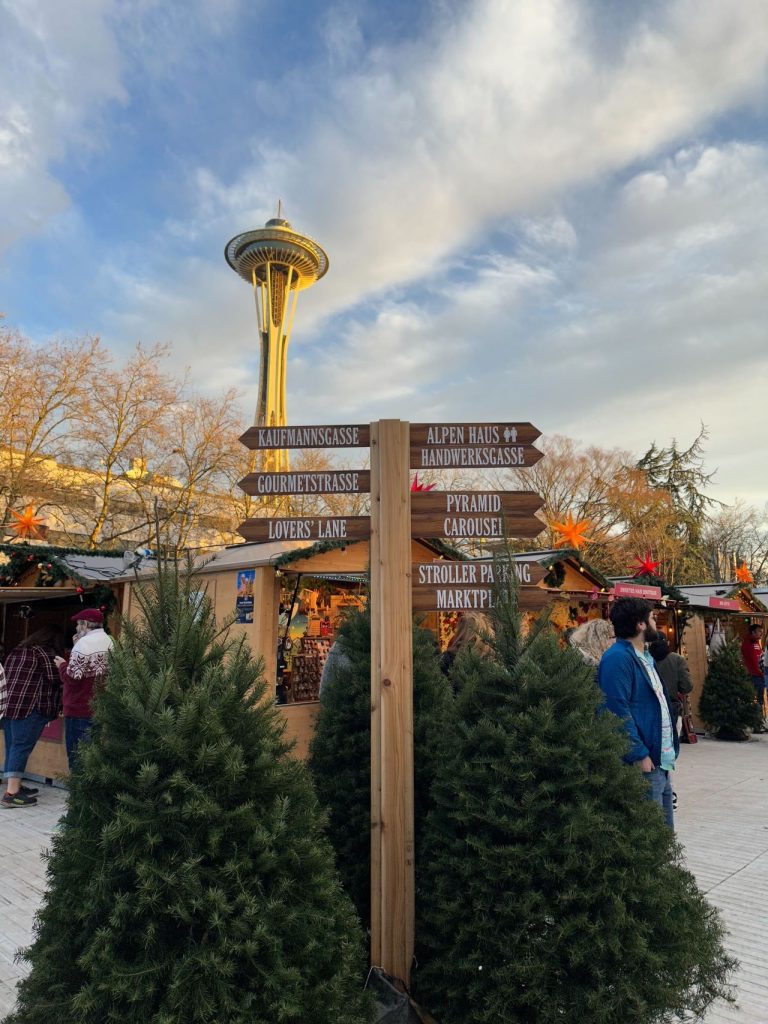
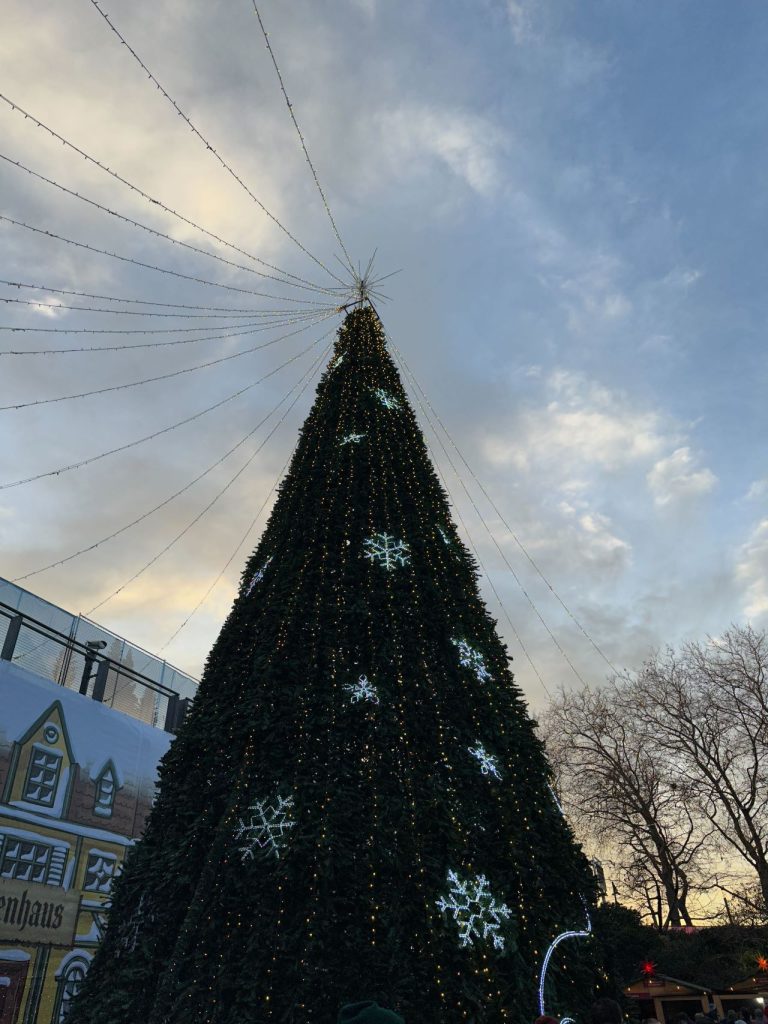
Now, decorations, vendor stalls, musical acts, and planning and publicizing the event does take funding. How do European cities and leading American cities like New York make the economics of Christmas markets work without tickets of admittance and overpriced concessions? Multiple models exist, but basically businesses in those cities have recognized the economic opportunity the seasonal markets represent and they either funded the trappings themselves or partnered with local government to throw the event.
Those other cities’ markets aren’t immune to $12 beers and hot chocolates that cost more than a week’s allowance, but in a less centralized event, another vendor can always step in with cheaper beverages and snacks to save Christmas. And when a market is integrated into the fabric of a city, marketgoers can spill into neighboring streets and storefronts when faced with overcrowding or tiresome entertainment options. Such an event would spread the economic benefits over a wider area.
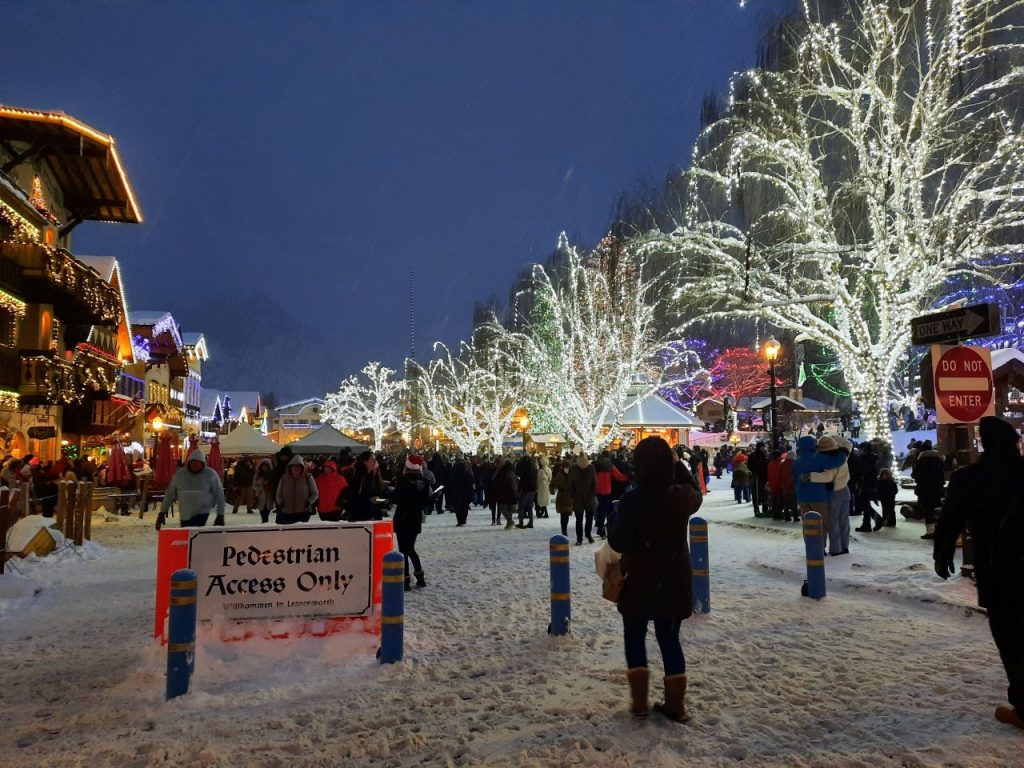
As constituted, the Seattle Christmas Market has very little spillover since attendees are pretty drained and ready to go home after dealing with traffic, long lines, and overpriced concessions. One can see how Uptown businesses do not necessarily want to chip in to throw an event that doesn’t drive foot traffic to their businesses and instead generates traffic jams that serve as a hindrance.
To break out of its rut, Seattle has to start to assembling the ingredients of a great street market, whether Christmas-themed or in the vein of an Asian night market. Pedestrianizing streets in business districts would be a good start, followed by ensuring those areas are well-served by transit before throwing large events there. Then it’s simply a matter of business and civic leaders coming together to commit to throwing a free event and investing resources to make it happen.
In a city with aspirations of being world class and embracing “Space Needle thinking” once more, as Mayor Bruce Harrell puts it, it’s unconscionable that a passable Christmas market is beyond reach. Overcoming these surmountable obstacles could be a catalyst for downtown economic recovery and inspire more people to live in the downtown core. On the other hand, leaving some Seattleites unable to access an event celebrating the Christmas spirit isn’t very One Seattle.
Doug Trumm is publisher of The Urbanist. An Urbanist writer since 2015, he dreams of pedestrian streets, bus lanes, and a mass-timber building spree to end our housing crisis. He graduated from the Evans School of Public Policy and Governance at the University of Washington in 2019. He lives in Seattle's Fremont neighborhood and loves to explore the city by foot and by bike.

